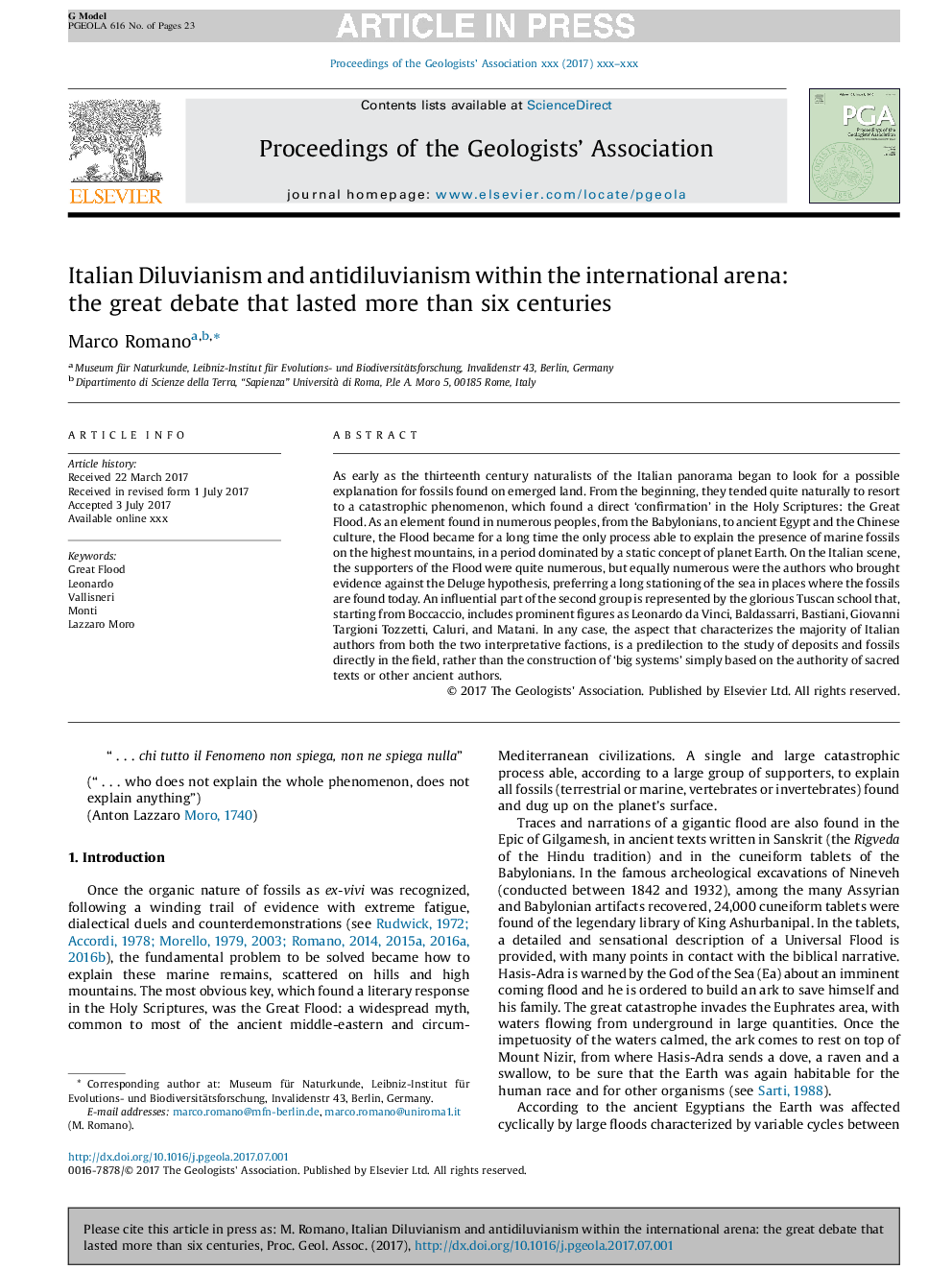| Article ID | Journal | Published Year | Pages | File Type |
|---|---|---|---|---|
| 8914604 | Proceedings of the Geologists' Association | 2018 | 23 Pages |
Abstract
As early as the thirteenth century naturalists of the Italian panorama began to look for a possible explanation for fossils found on emerged land. From the beginning, they tended quite naturally to resort to a catastrophic phenomenon, which found a direct 'confirmation' in the Holy Scriptures: the Great Flood. As an element found in numerous peoples, from the Babylonians, to ancient Egypt and the Chinese culture, the Flood became for a long time the only process able to explain the presence of marine fossils on the highest mountains, in a period dominated by a static concept of planet Earth. On the Italian scene, the supporters of the Flood were quite numerous, but equally numerous were the authors who brought evidence against the Deluge hypothesis, preferring a long stationing of the sea in places where the fossils are found today. An influential part of the second group is represented by the glorious Tuscan school that, starting from Boccaccio, includes prominent figures as Leonardo da Vinci, Baldassarri, Bastiani, Giovanni Targioni Tozzetti, Caluri, and Matani. In any case, the aspect that characterizes the majority of Italian authors from both the two interpretative factions, is a predilection to the study of deposits and fossils directly in the field, rather than the construction of 'big systems' simply based on the authority of sacred texts or other ancient authors.
Related Topics
Physical Sciences and Engineering
Earth and Planetary Sciences
Geology
Authors
Marco Romano,
